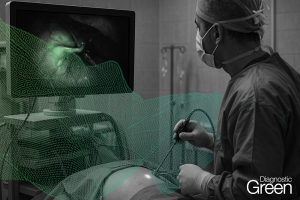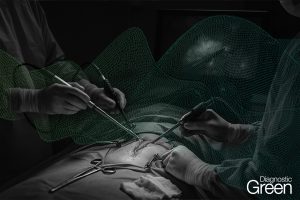Vulvar cancer guidelines recommend inguinal sentinel lymph node (SLN) biopsy as the standard of care for patients with unifocal squamous cell carcinoma tumors less than 4 cm and clinically non-suspicious nodes in the groin. The use of radioactive tracer is mandatory, while the application of blue dye is optional. Combination detection techniques have been established as the most accurate for early vulvar cancer, with increasing evidence supporting indocyanine green (ICG) as an alternative to blue dye. However, protocols for ICG use remain heterogeneous, and the optimal protocol is yet to be defined.
This video article presents a stepwise demonstration of the SLN mapping technique using a combination of radioactive 99 m-Tc and ICG with endoscopic near-infrared (NIR) cameras in two cases. A 52-year-old woman diagnosed with T1 vulvar cancer, with no extravulvar disease, was scheduled for wide local tumor excision and bilateral inguinal SLN biopsy. The procedure began with 99 m-Tc detection, followed by ICG identification. A 25 mg vial of ICG was dissolved in 10 mL of sterile water, with 2 mL injected into four intradermal quadrants around the tumor. Ten minutes post-injection, a small incision in the groin was made, assisted by lymphoscintigraphy fluorescence imaging using the NIR/ICG-IMAGE1S™ system. Images of another IB FIGO stage vulvar cancer patient undergoing SLN inguinal procedure with the NIR Da Vinci Xi camera were also included. The sentinel nodes were accurately detected in both patients, with no involvement after histological study. The informed consent for this video was obtained from both patients.




